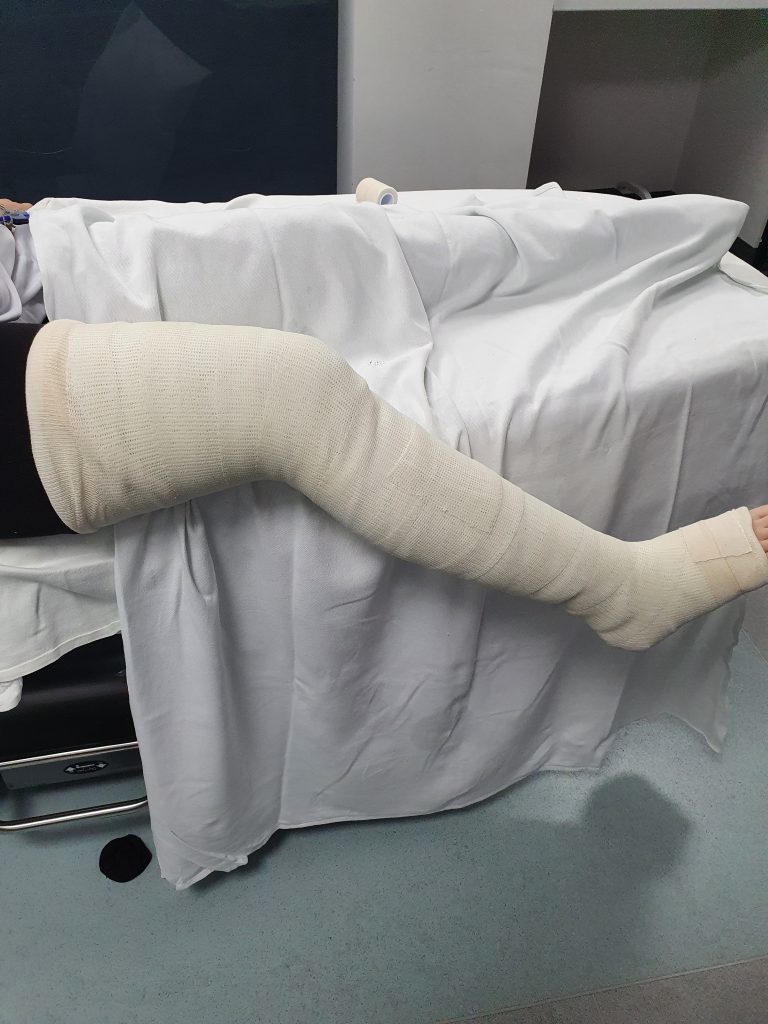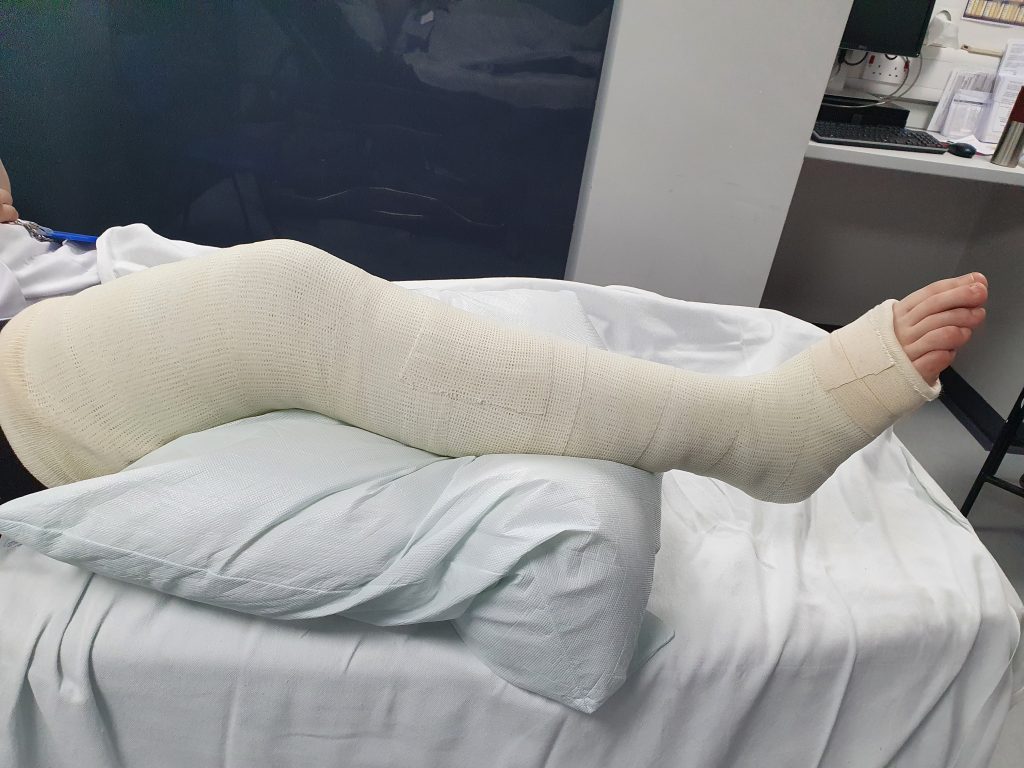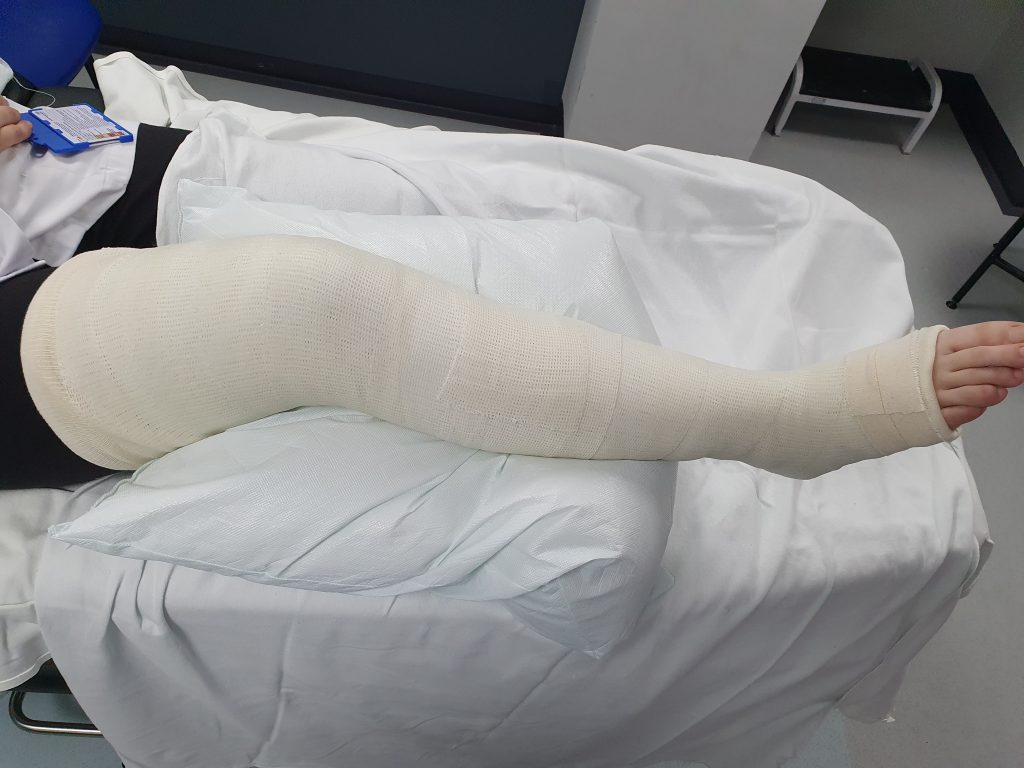Above knee cast


Your doctor’s advice
A doctor has assessed you and decided you need to go into an above knee cast.
These casts go from your thigh to the toes. This cast is used to immobilise the knee and ankle – usually for knee injuries or proximal lower limb injuries.




